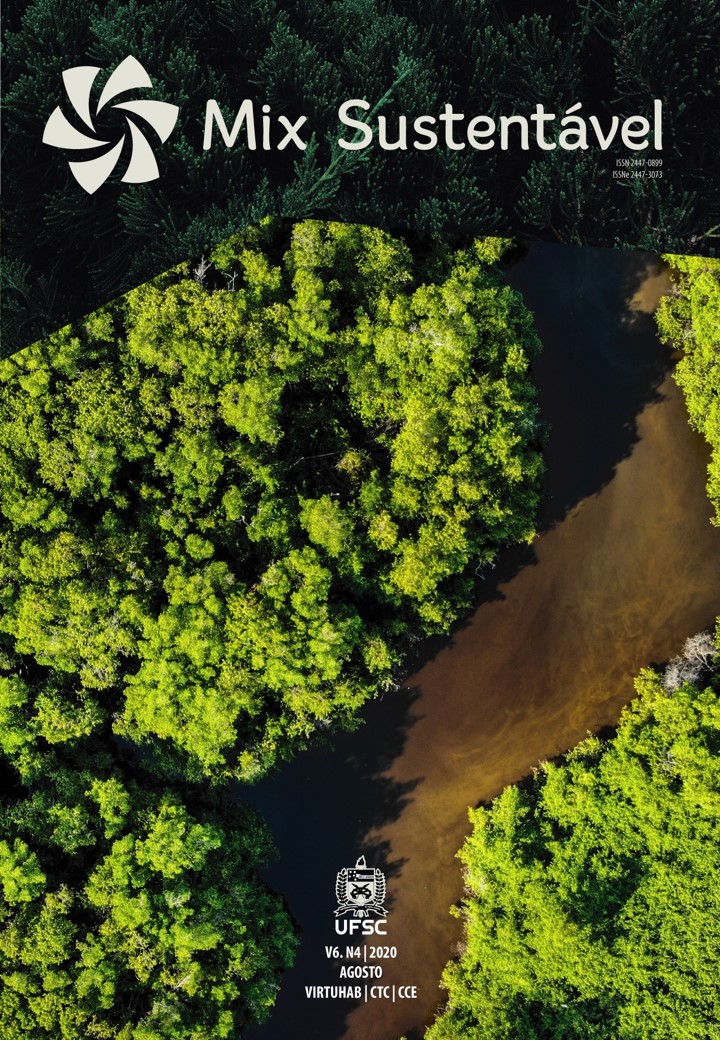THEORETICAL ESTIMATE OF ENERGY USE BIODIGESTOR PARTNER IN THE MUNICIPALITY OF SOUZA-PB
DOI:
https://doi.org/10.29183/2447-3073.MIX2020.v6.n4.43-50Keywords:
Biogas, biodigestors, electricityAbstract
The lack of treatment and incorrect deposition of organic waste, resulting from agricultural production has negative impacts on the environment, due to its high degree of pollution, causing degradation of water and soil resources. Much of the processing and manufacturing of products in the agricultural activity depends intrinsically on electric energy for production, being of fundamental importance for such activity. The objective is to estimate the potential of electric power generation, based on the energetic use of methane gas, resulting from agricultural residues, from a biodigester located in the rural area, as well as the evaluation of the economic viability of the system. The biogas production estimate found was favorable to the use of a biodigester for power generation, emphasizing the importance of correctly sizing and maintaining it. That said, the use of agricultural waste brings environmental benefits such as treatment of organic waste and reduction of greenhouse gases. It is concluded that the generation of electricity in rural properties adds financial value and provides renewable energy inputs for agricultural productionReferences
MANSO,(2016) Kennia de Jesus. Confinamento de bovinos: Estudo do gerenciamento dos resíduos. Universidade católica de Goiás.
SCHWINGEL, Alice Watte et al. Desempenho da co-digestão anaeróbia de dejetos suínos com inclusão de glicerina bruta. Revista Ciência Agronômica, v. 47, n. 4, p. 778-783, 2016.
DA PAIXÃO, Mateus Vinicius Faria et al. Biogás como fonte energética. Revista Pesquisa e Ação, v. 4, n. 1, p. 129-145, 2018.
Embrapa(2010) Confinamento de bovinos. Acessado: em 21 de maio de 2018, https://docs.ufpr.br/~freitasjaf/artigos/CONFINAMENTO.htm
MATTOS, Luis Cláudio. Manual do biodigestor sertanejo. Recife, 2011.
CHP Brasil(2018) Biogas. Acessado em 21 de maio de 2018, http://www.chpbrasil.com.br/biogas.html.
TOAZZA, Rudinei; DAL MAGRO, Cristian Baú; DA SILVA, Alini. Análise de investimento para ampliação de atividade de confinamento bovino em uma propriedade rural. Revista Brasileira de Contabilidade, n. 221, p. 40-51, 2016.
ALVARENGA,(2006) Frederico de Oliveira Junior. Manual de construção do biodigestor rural. Acessado em 20 de maio de 2016, http://www1.pucminas.br/imagedb/documento/DOC_DSC_NOME_ARQUI20140917140023.pdf.
Downloads
Published
How to Cite
Issue
Section
License
Creative Commons Copyright Notice
Attribution 4.0 International




